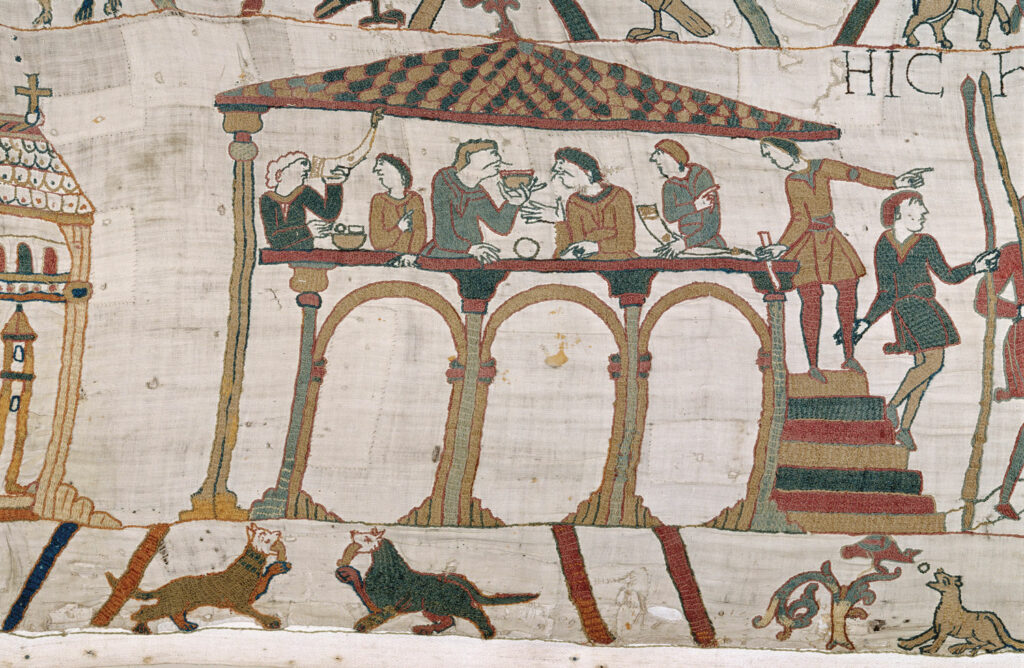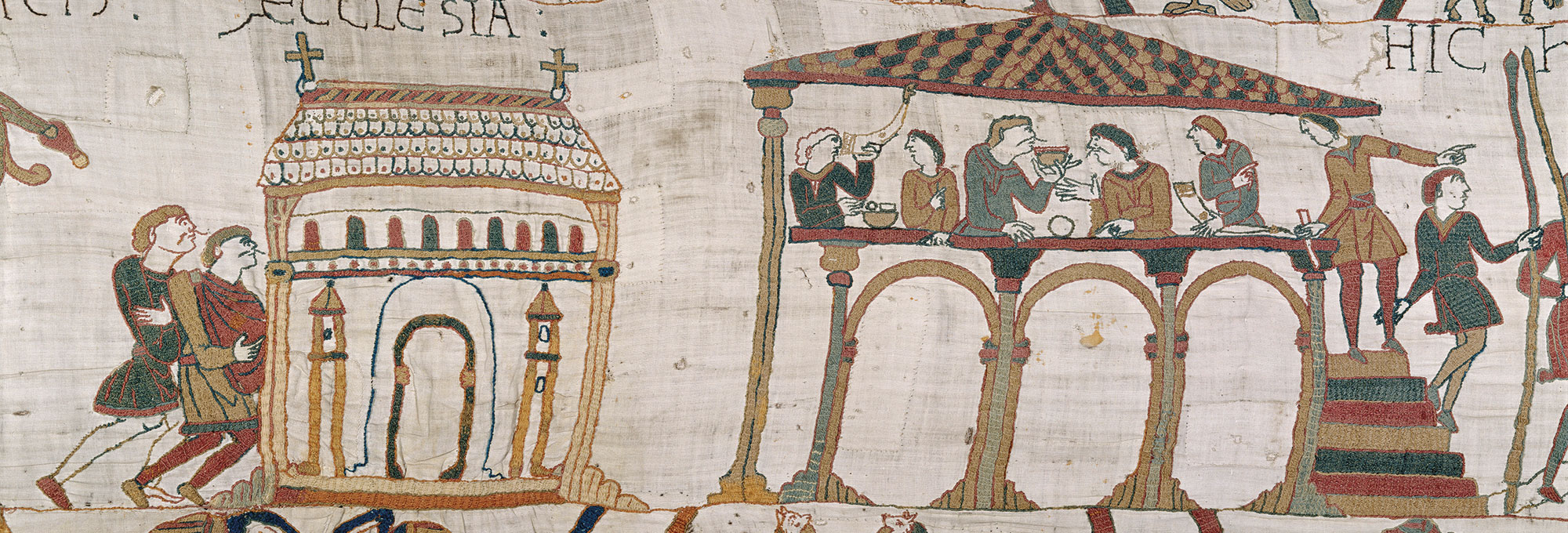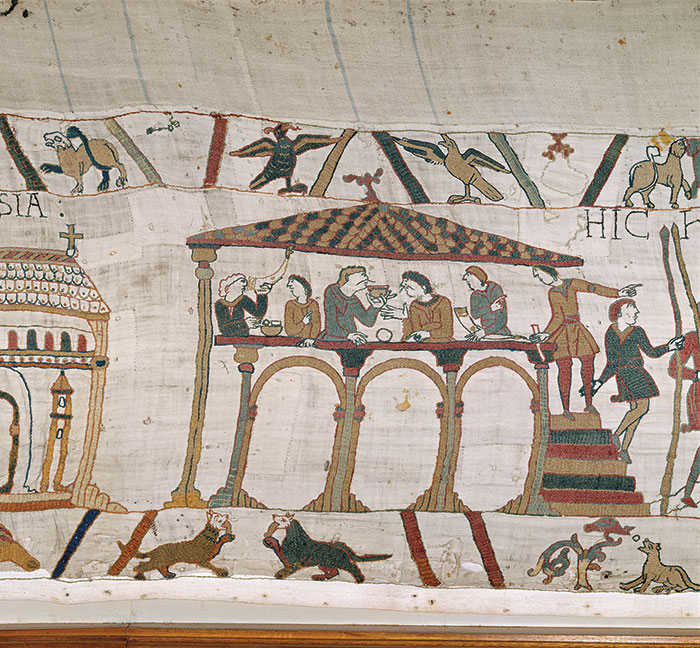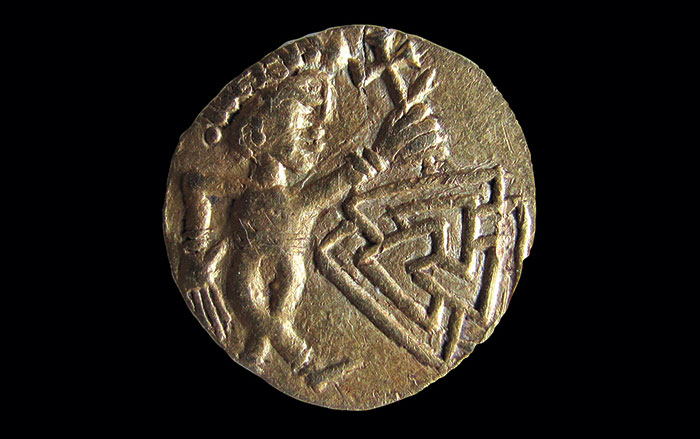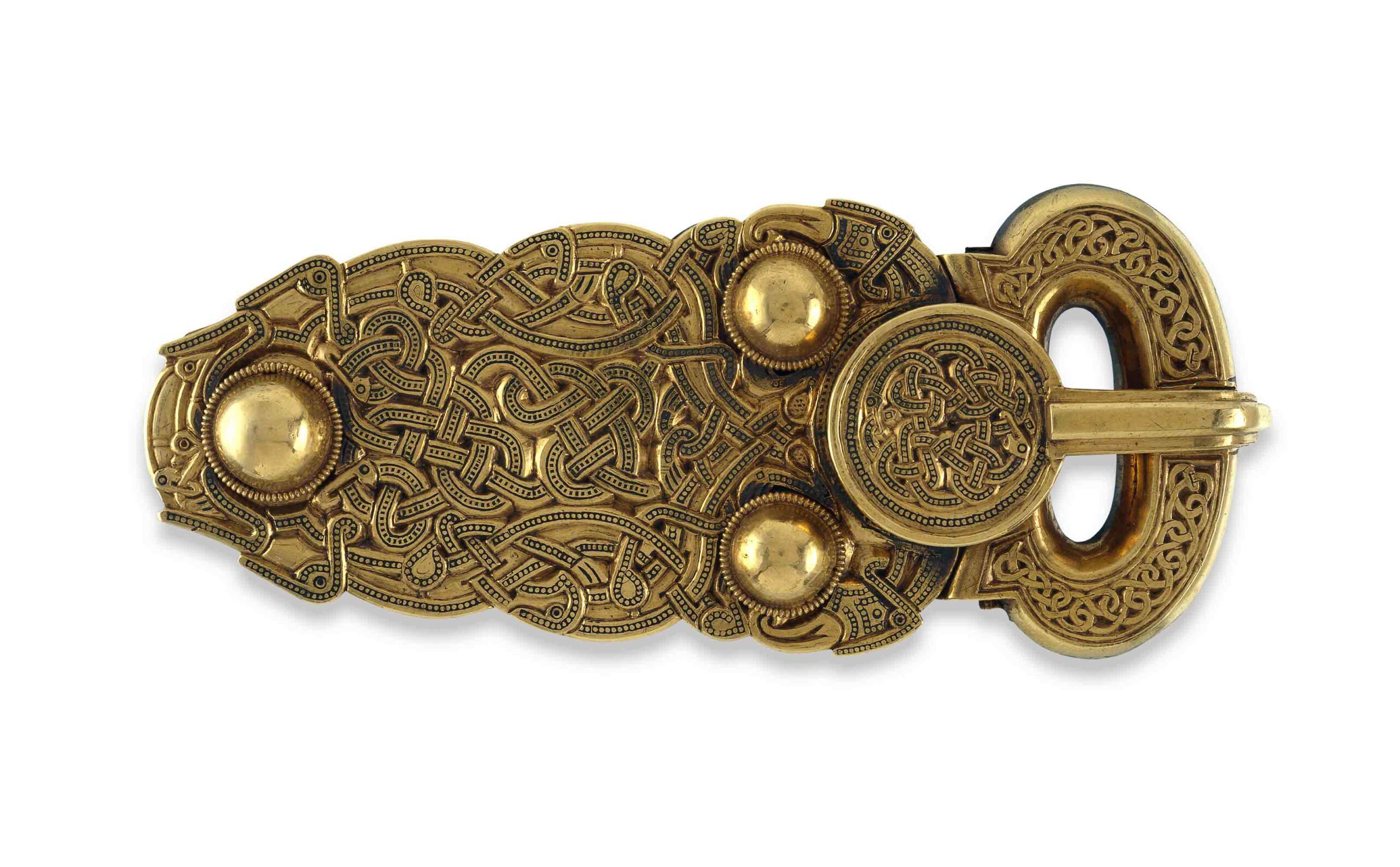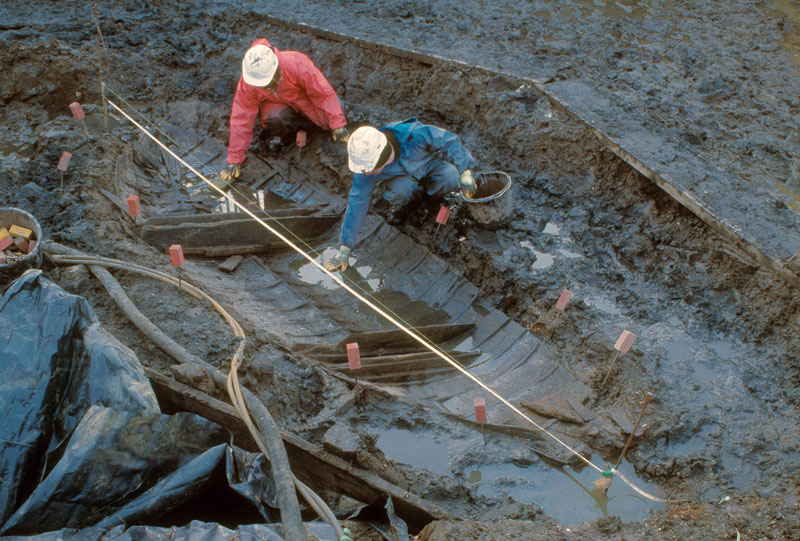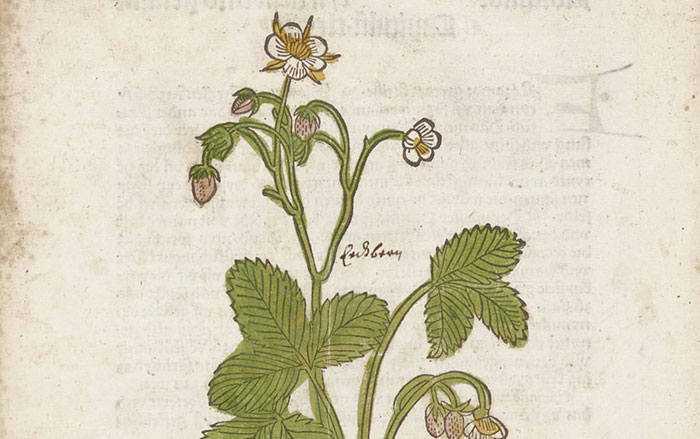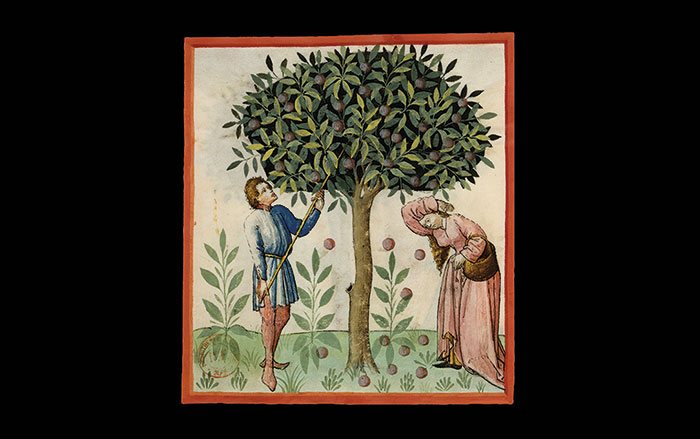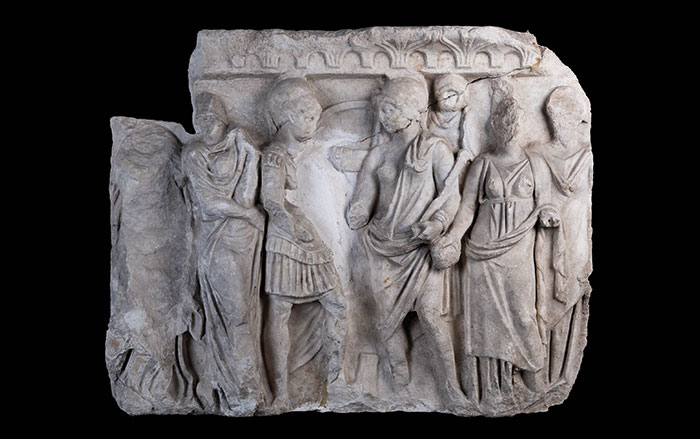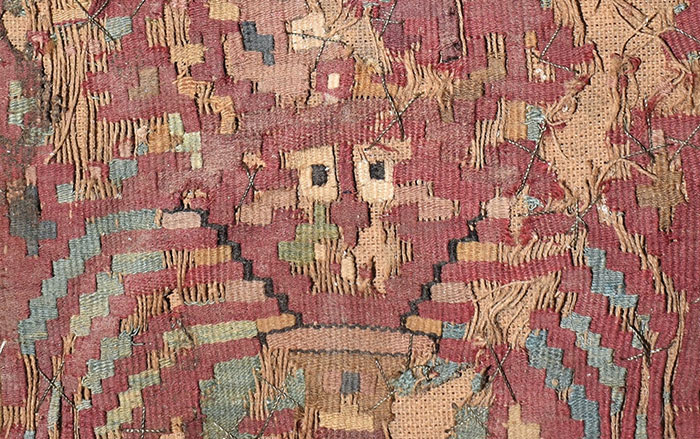The Bayeux Tapestry, a 230-foot-long linen cloth crafted in the eleventh century, depicts scenes from William the Conqueror’s invasion of England and his defeat of Harold Godwinson, England’s last Anglo-Saxon king, at the Battle of Hastings in 1066. (See “Unfolding the Bayeux Tapestry,” January/February 2021.) There are detailed images of boats, horses, battles, fish, and even of Harold himself. Only four actual places in England are shown on the tapestry—one being Harold’s residence—but their locations have been hard to identify. “Despite the tapestry’s relative notoriety,” says Newcastle University archaeologist Duncan Wright, “it’s unusual that little concerted effort has been made by archaeologists to locate Harold’s complex on the ground.”
A team led by Wright has now confirmed the location of the king’s home. The archaeologists investigated a site known as Bosham Manor House that local tradition has long linked with Harold. The village of Bosham is known to have been one of Harold’s chief seats of government and the location of his harbor and personal fleet. Wright’s team surveyed the property and reexamined results from old excavations. A key piece of evidence caught their attention––a latrine located within the ruins of a tenth-century timber building. Only homes belonging to people of the highest status during that era had toilets attached to their private bedchambers. Considering the existence of these en suite facilities, researchers believe that the property must have belonged to Harold’s family. “This is a rare example of being able to correlate the archaeological sources with a scene from the Bayeux Tapestry,” says Wright. “We often think of the tapestry as just an artwork, but here we have evidence that it captures real sites and landscapes.”
